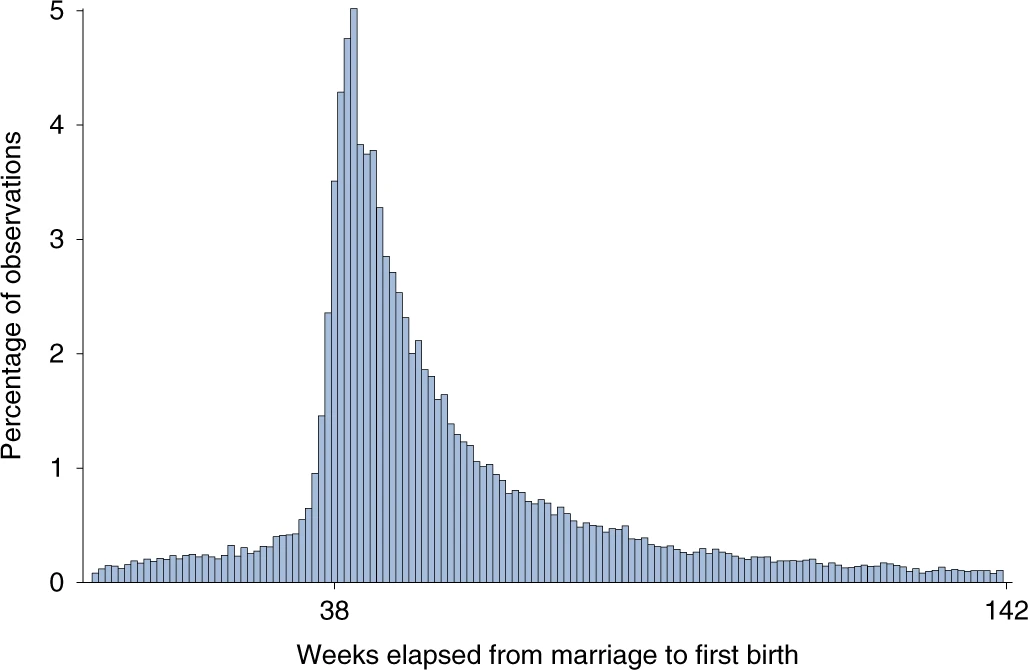Oded Galor & Marc Klemp
Nature Ecology & Evolution volume 3, pages853–857(2019) Cite this article
Metrics details
An Author Correction to this article was published on 08 May 2019
Life-history theory suggests that the level of fecundity of each organism reflects the effect of the trade-off between the quantity and quality of offspring on its long-run reproductive success. The present research provides evidence that moderate fecundity was conducive to long-run reproductive success in humans. Using a reconstructed genealogy for nearly half a million individuals in Quebec during the 1608–1800 period, the study establishes that, while high fecundity was associated with a larger number of children, perhaps paradoxically, moderate fecundity maximized the number of descendants after several generations. Moreover, the analysis further suggests that [безымянные] evolutionary forces decreased the level of fecundity in the population over this period, consistent with an additional finding that the level of fecundity that maximized long-run reproductive success was below the population mean. The research identifies several mechanisms that contributed to the importance of moderate fecundity for long-run reproductive success. It suggests that, while individuals with lower fecundity had fewer children, the observed hump-shaped effect of fecundity on long-run reproductive success reflects the beneficial effects of lower fecundity on various measures of child quality, such as marriageability and literacy, and thus on the reproductive success of each child.
на картинке мода попадает на 42 недели, по-моему
оттуда:
Отметим про себя, однако, что сама проблема, если ее перевести на язык популяционной генетики, выглядит осмысленно.
Отметим про себя, однако, что сама проблема, если ее перевести на язык популяционной генетики, выглядит осмысленно.

4 comments:
стырил у Салавата
https://www.facebook.com/groups/demography.hse/permalink/5843347102345795
к сожалению, нет у него возможностей расшаривания
Допустим, одни люди чуть более плодовиты (благодаря некой комбинации своих генов) и рожают детей практически без перерыва, что, конечно,...
это неверное предположение, одни люди контролируют число, другие — нет
но общей идее не противуречит
из ссылок:
Life–history theory, fertility and reproductive success in humans
Beverly I Strassmann and Brenda Gillespie
Published:22 March 2002https://doi.org/10.1098/rspb.2001.1912
Abstract
According to life‐history theory, any organism that maximizes fitness will face a trade‐off between female fertility and offspring survivorship. This trade‐off has been demonstrated in a variety of species, but explicit tests in humans have found a positive linear relationship between fitness and fertility. The failure to demonstrate a maximum beyond which additional births cease to enhance fitness is potentially at odds with the view that human fertility behaviour is currently adaptive. Here we report, to our knowledge, the first clear evidence for the predicted nonlinear relationship between female fertility and reproductive success in a human population, the Dogon of Mali, West Africa. The predicted maximum reproductive success of 4.1±0.3 surviving offspring was attained at a fertility of 10.5 births. Eighty‐three per cent of the women achieved a lifetime fertility level (7–13 births) for which the predicted mean reproductive success was within the confidence limits (3.4 to 4.8) for reproductive success at the optimal fertility level. Child mortality, rather than fertility, was the primary determinant of fitness. Since the Dogon people are farmers, our results do not support the assumptions that: (i) contemporary foragers behave more adaptively than agriculturalists, and (ii) that adaptive fertility behaviour ceased with the Neolithic revolution some 9000 years ago. We also present a new method that avoids common biases in measures of reproductive success.
Post a Comment